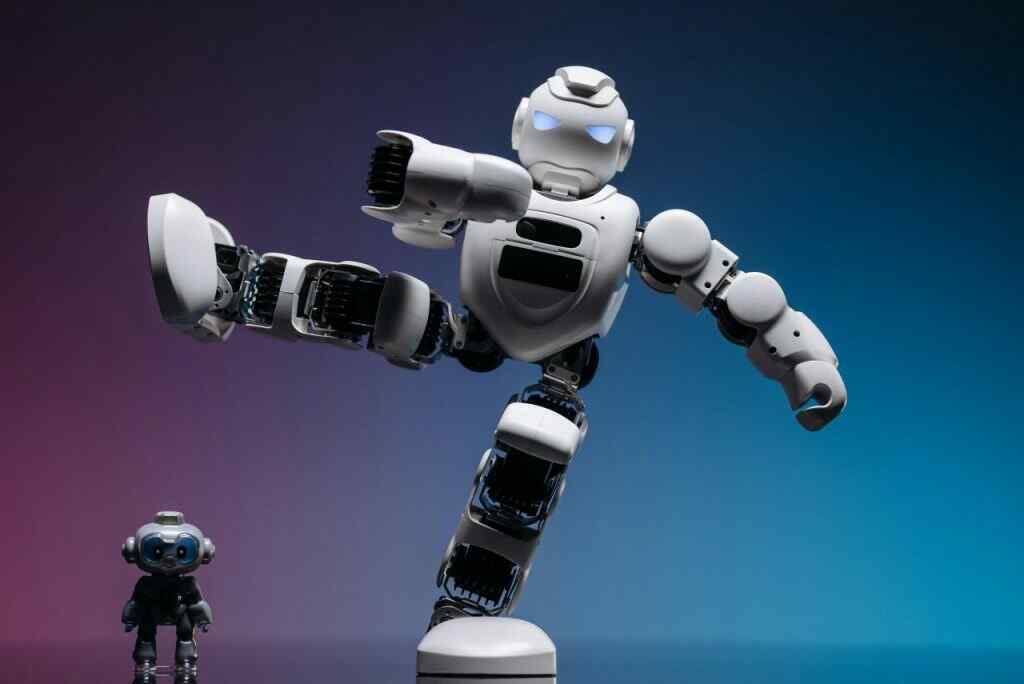BMW Embraces Humanoid Robots in Manufacturing, Following Tesla’s Lead
2024: A New Era of Humanoid Robots in Automotive Manufacturing
The automotive manufacturing landscape is undergoing a transformative shift, with humanoid robots taking center stage. BMW, a renowned automaker, has joined the growing list of companies venturing into this realm of innovation, collaborating with Figure, a California-based startup specializing in the development of artificial intelligence-driven humanoids. This partnership marks a pivotal moment in the industry, mirroring Tesla’s earlier foray into humanoid robotics.
The Promise of General-Purpose Robots in Automotive Production
Traditionally, robotics in car manufacturing has been confined to single-purpose machines, programmed to perform repetitive tasks. However, Figure’s robots represent a paradigm shift, possessing the versatility to undertake a diverse range of tasks, notably those considered overly tedious or hazardous for human workers.
Brett Adcock, Figure’s founder and CEO, envisions these robots as a catalyst for increased productivity, reduced costs, and enhanced safety within manufacturing environments. His experience in founding Archer Aviation, an electric air taxi company, further underscores his expertise in the realm of cutting-edge technologies.
BMW’s Strategic Deployment of Humanoid Robots
BMW and Figure are embarking on a collaborative journey to identify suitable roles for humanoid robots within the carmaker’s manufacturing processes. The initial phase of this deployment will unfold at BMW’s plant in Spartanburg, South Carolina, where popular SUV models like the X3, X4, X5, X6, X7, and XM are assembled.
The Figure 01, standing at 5 feet 6 inches tall, possesses an impressive array of capabilities. It can effortlessly carry loads of up to 44 pounds, operate for five hours on a single charge, and navigate its surroundings at a steady pace of 2.7 miles per hour. Figure’s goal is to deploy this versatile robot across various industries, including warehousing, logistics, and retail, demonstrating its adaptability to diverse operational contexts.
Tesla’s Ambitious Vision for Optimus and Beyond
Tesla, under the visionary leadership of Elon Musk, is also actively pursuing the development of humanoid robots, aptly named Optimus. Musk’s aspirations extend beyond factory automation, envisioning Optimus as a personal butler and even predicting that Tesla’s robotics division could potentially surpass its automotive business in terms of significance.
Hyundai, another notable automaker, has already embraced robotic technology in the form of camera-equipped robot dogs from Boston Dynamics, a company under its ownership. These robotic dogs are deployed for quality control purposes, highlighting the versatility of robots in various manufacturing processes.
The Changing Landscape of Automotive Employment
The advent of automation and the rise of electric cars, which require less labor compared to their combustion-powered counterparts, have already posed challenges to traditional automotive jobs. The introduction of humanoid robots, with their potential for increased efficiency and cost-effectiveness, could further exacerbate this trend, leading to a potential decline in the automotive workforce.
However, Figure seeks to address this concern by emphasizing the existence of 10 million unfilled jobs in the United States alone. The company sees robots as a potential solution for filling these roles, particularly those that people are reluctant to take on.
The Gradual Evolution of Robot Capabilities
It is important to note that the takeover of complex manufacturing processes by robots is not an immediate reality. Figure’s robot, for instance, recently achieved a significant milestone by learning how to make coffee using a Keurig machine, widely regarded as one of the simplest coffee makers to operate.
The fact that the robot acquired this skill by simply observing human coffee-making routines for 10 hours showcases its remarkable learning capabilities. While this may seem like a mundane task, it underscores the potential for robots to learn and adapt to various scenarios through observation and experience.
Conclusion: The Future of Humanoid Robots in Automotive Manufacturing
The integration of humanoid robots in automotive manufacturing represents a significant step towards increased automation and efficiency. BMW and Figure’s partnership, along with Tesla’s ambitious plans for Optimus, signals a growing trend within the industry. While the full impact of these robots on the automotive workforce remains uncertain, their potential to transform manufacturing processes is undeniable.
The gradual evolution of robot capabilities, from simple tasks like coffee-making to more complex manufacturing operations, highlights the ongoing advancements in artificial intelligence and robotics. As these technologies continue to mature, the future of humanoid robots in automotive manufacturing holds immense promise for increased productivity, reduced costs, and enhanced safety.
